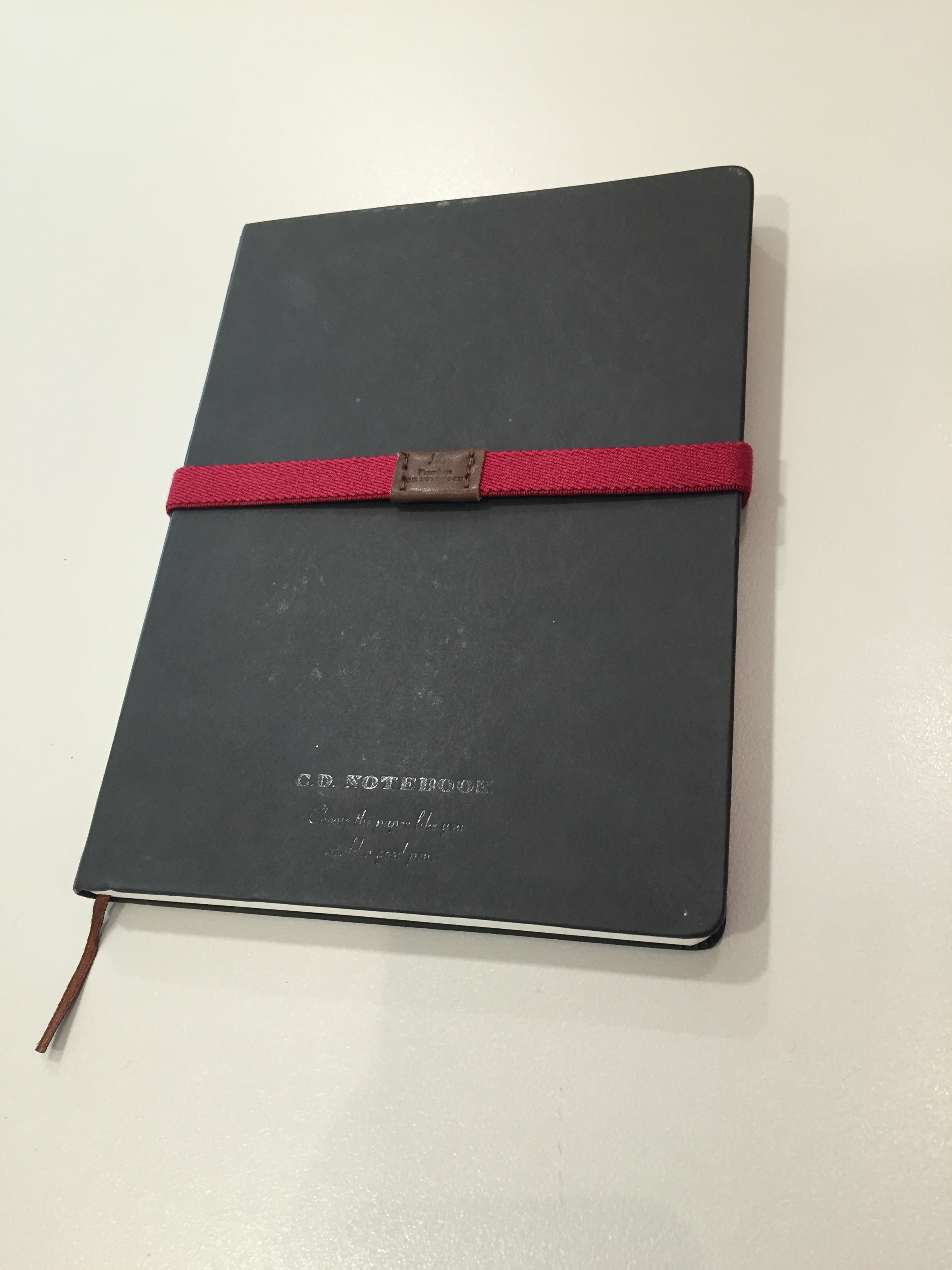
I go through a lot of notebooks. I am also really pedantic about the look of my notebook, which (for a work notebook), must be a black, hardcover and roughly A5 sized. I have also come to realise that I much prefer a whiter paper to ivory and over the last few years, have really needed it to be fountain pen friendly as well. I’m also very fond of dot or grid paper (but only if the grid is grey and quite subtle).
This is how I have stumbled across the Apica Hardcover notebook. For all intents and purposes, the Apica notebook fits my requirements to a T. Apica has been making the CD notebook for a while, but it has only been available in a softcover format, until recently. The new hardcover version comes in an understated paper type exterior, which is available in black (in grid, ruled and plain format), red (grid), navy (ruled) and light brown (plain). It also comes with a notebook strap – once again different colours based on whatever format you have chosen.
So far so good.
When you open the notebook, the inside page is a grurple (grey-purple) type colour with a subtle letterpressed pattern where there is room for your title/notebook information. The pages are beautifully smooth and subtly cream in colour and the rulings are a faint subtle, thin grey line, which to me, is probably close to perfect for what I want from a grid page.
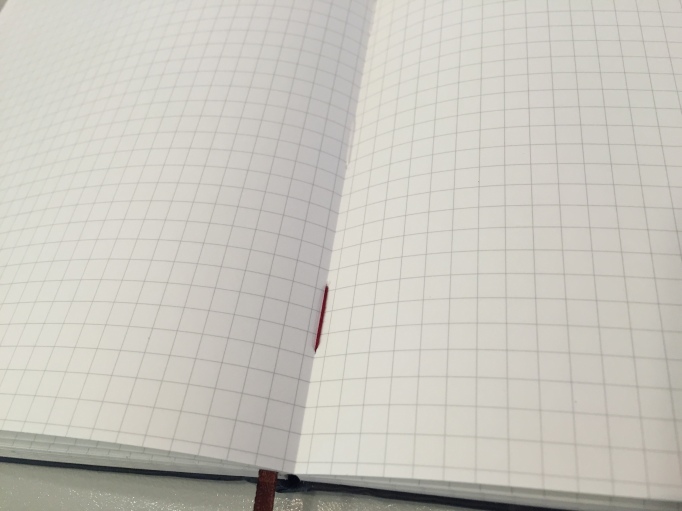
There are other beautiful touches as well. There are “accent” stitches in red which correspond to the notebook strap – red in my case, and a finished brown ribbon that doesn’t fray when used, unlike the Moleskine versions. No back pocket but that’s not important for me.
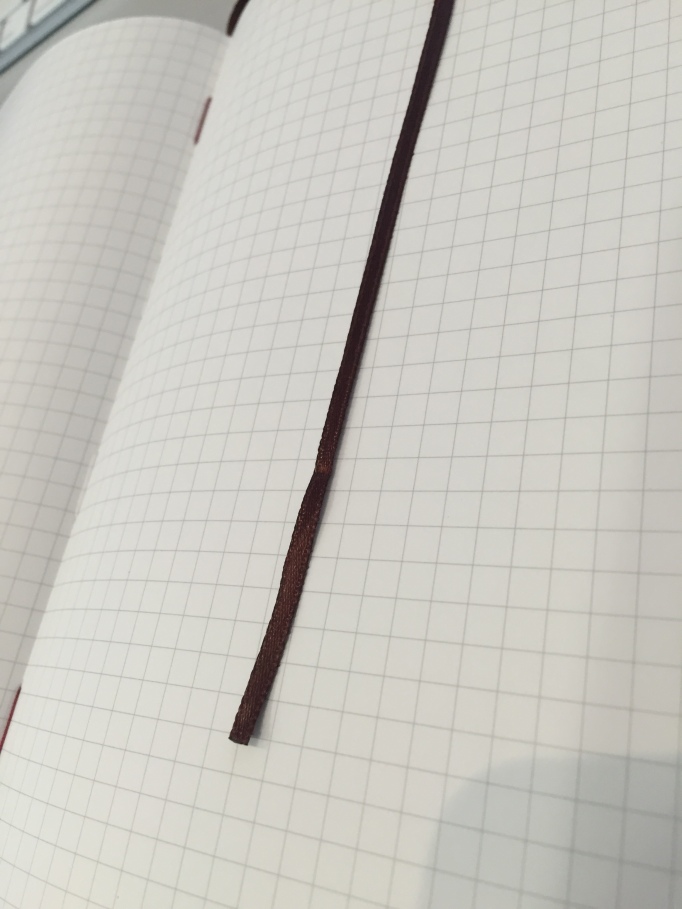
The paper performed really well for most gel and rollerball pens that I tried. All of the lines came out crisp and there was no feathering, bleed through, shadowing or ghosting for the pens I tried. The fountain pens I used in this notebook, however, was a completely different story.
I don’t use or own many fine nibbed fountain pens, usually, I prefer a medium nib. I saw a little bit of feathering and some show through with some pen and ink combinations used. The Iroshizuku Yama Budo is a consistent featherer and show through-er which is irritating, as I use it for my index pages. De Atramentis, Noodlers (not shown here) and Diamine inks all seem to have a similar problem, as well as other Iroshizuku inks – though not as bad as the Yama Budo, which is probably the worst performing out of all of the inks I’ve tried. These problems seem to occur in both the wider/wetter nibs that I’ve used as well as the finer, drier ones – like the Pilot Kakuno shown here, one of my drier pens, where you can see a bit of feathering in the P and I of Pilot.
One brand of ink that I have had less problems with is Sailor – the Sailor Blue shown here looks nice and crisp. I’ve also used Yama Dori which has looked great against the creamy white pages.
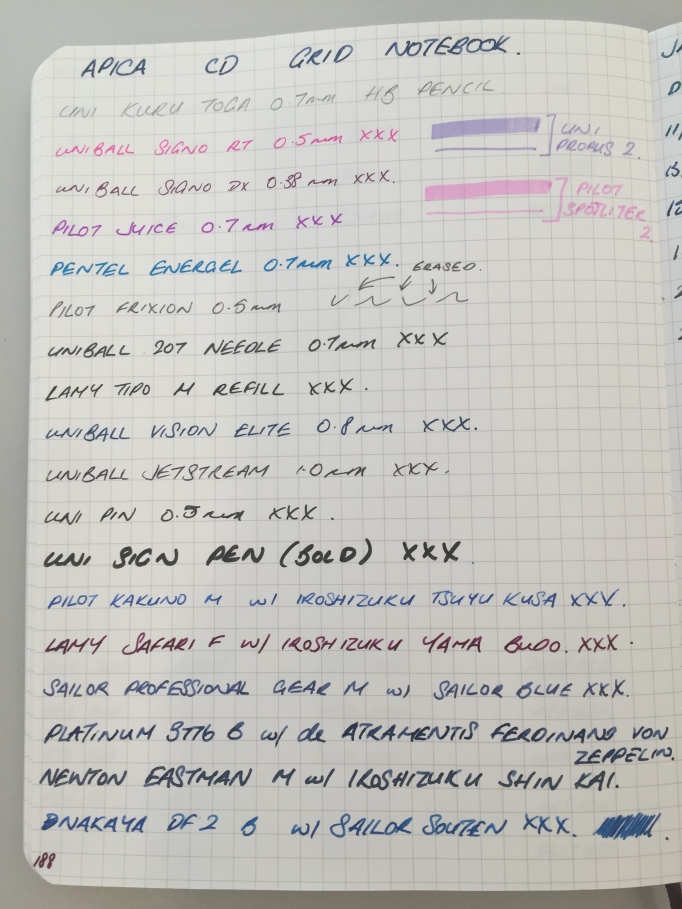
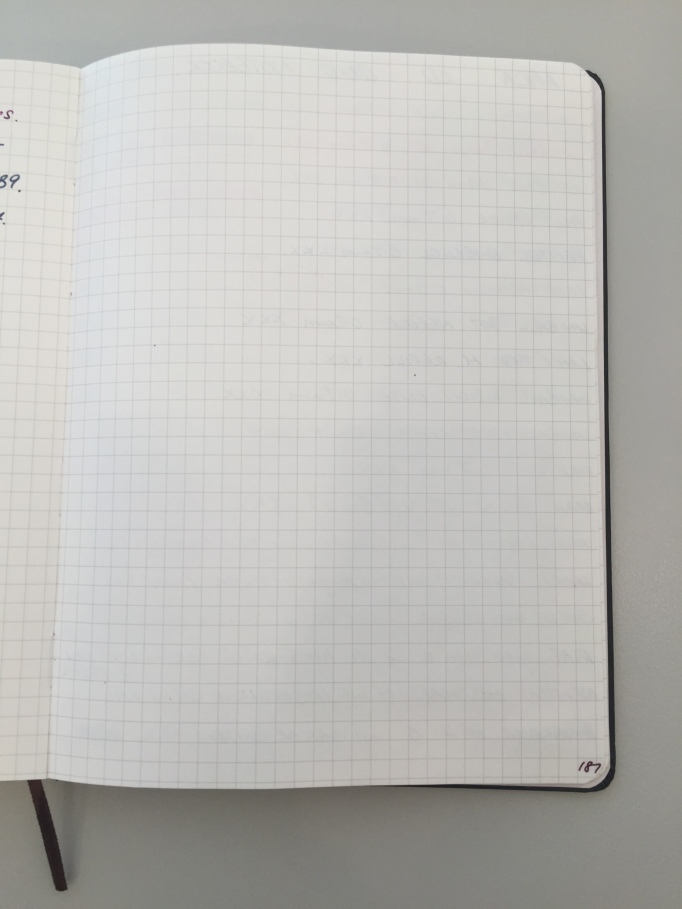
[Reverse Page]
Just as a disclaimer – I have had these same problems with Rhodia webnotebooks and Maruman Mnemosyne notebooks. If you have used these with no problems, you are likely not to experience problems. The only paper I’ve not had this issue with (with the exception of Noodlers Upper Ganges Blue) is Tomoe.

[Feathering and inconsistent paper performance. Some parts show no feathering or bleedthrough, but others do. This can’t be due to hand oils either as this was the top of a fresh page.]
I also find the pages to be very slippery. It feels as though the pages are so smooth sometimes, that some nibs have problems getting a good flow on them which made them a little dry feeling on this paper. I experienced this issue with my TWSBI 580 Al M nib with Iroshizuku Tsuyu Kusa (not shown here), which is usually a solid performer on Tomoe and Rhodia – not too wet, not too dry.
Would I buy it again? No, unfortunately not. This is an expensive notebook – more than Rhodia and Maruman. There is a lot to like. This is a beautifully and tastefully made notebook, which elegant touches. But it doesn’t perform that well against fountain pens (in my experience) compared to others, such as Tomoe River Paper and the much less expensive Clairefontaine Life notebook. I think a lot of people will be really happy with this notebook, but sadly, I don’t think its quite for me.
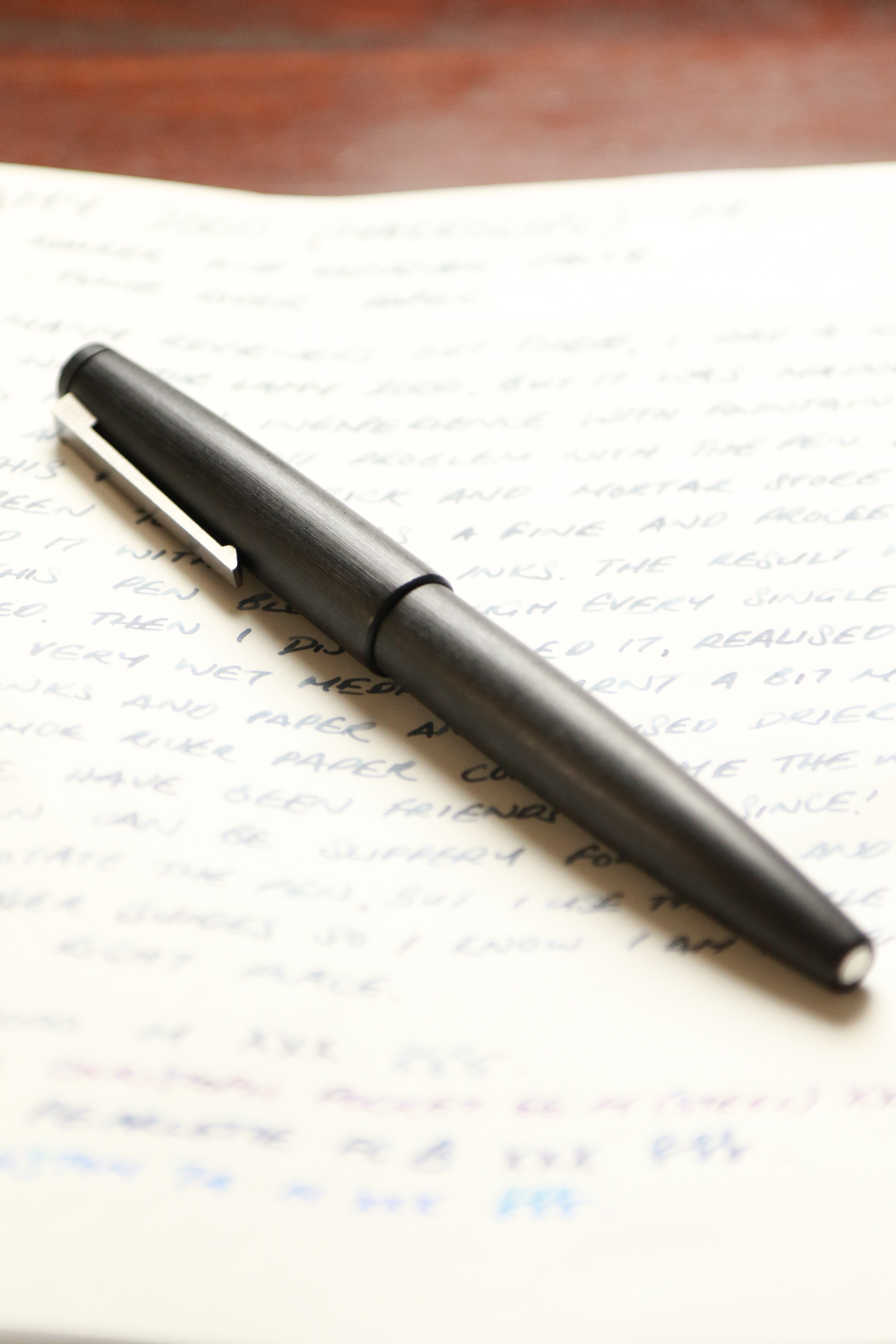
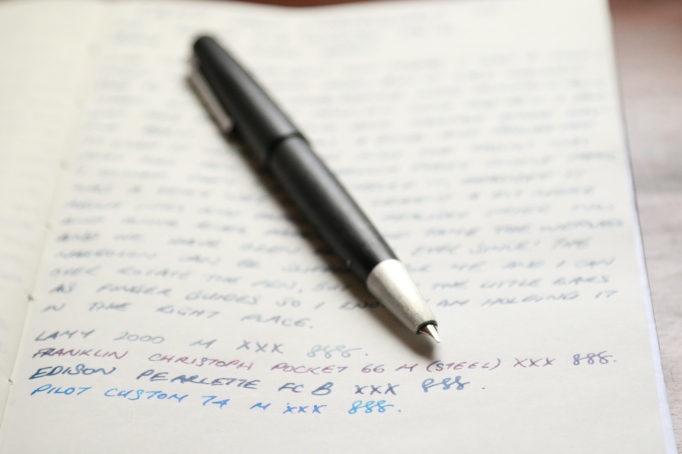
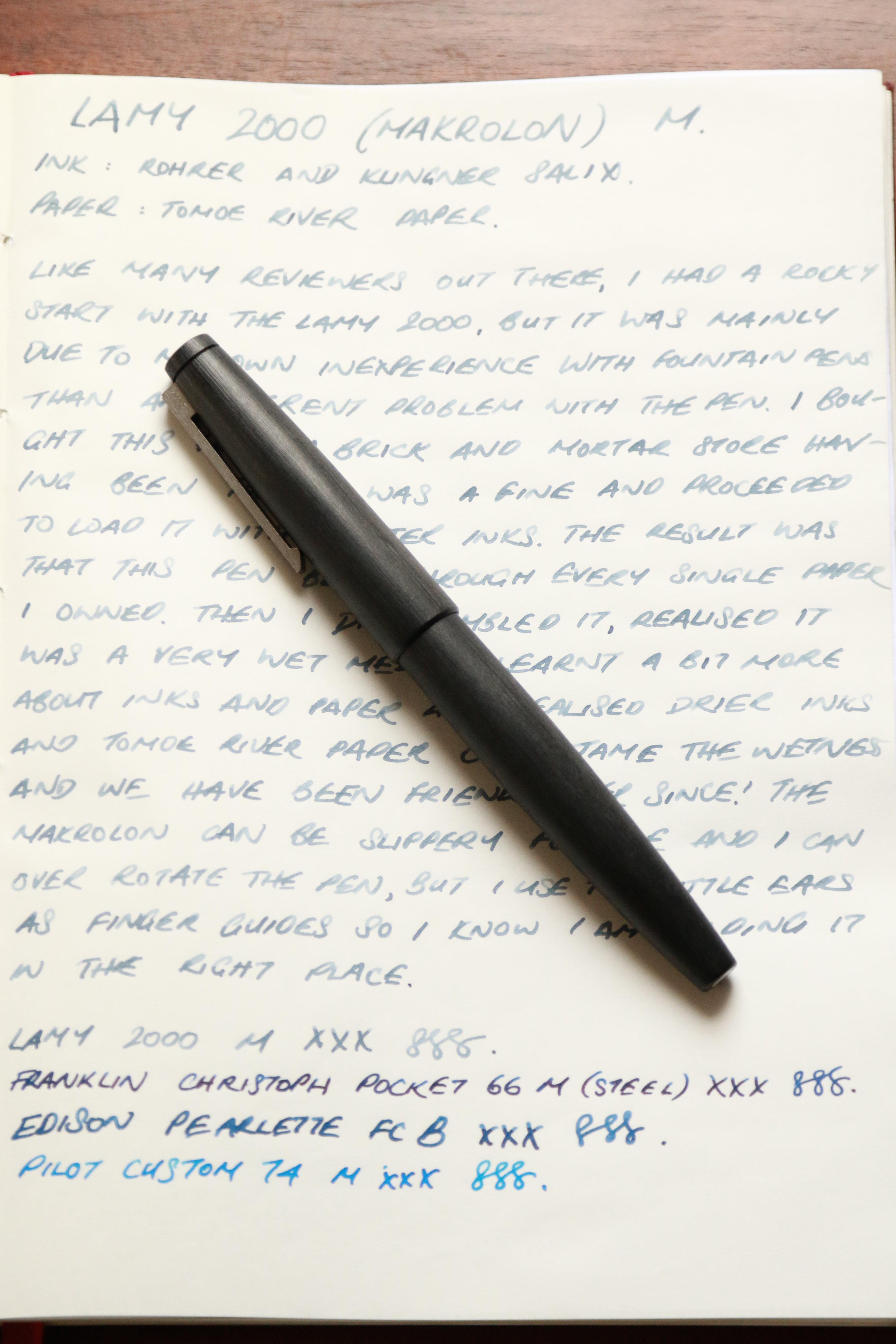

You must be logged in to post a comment.